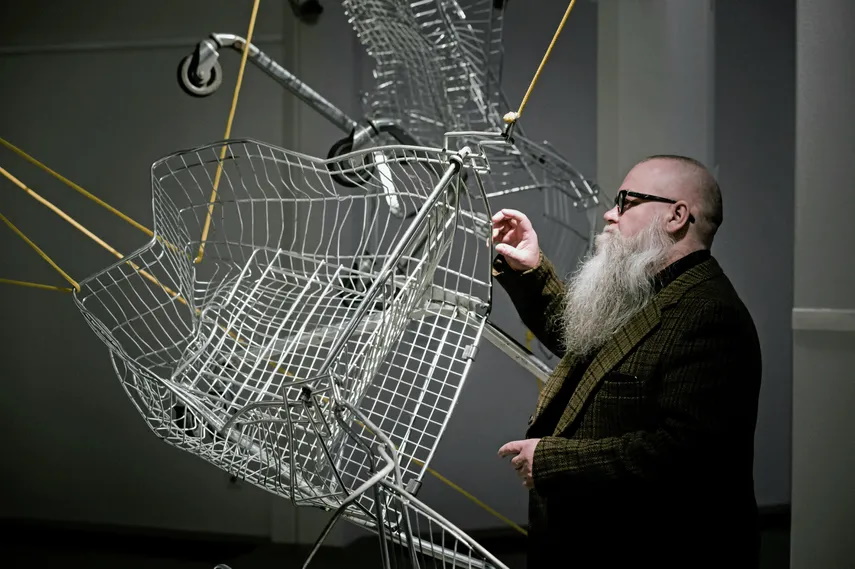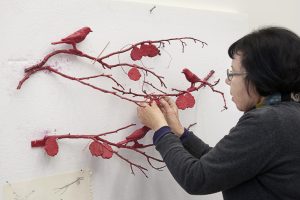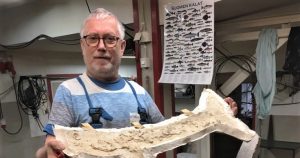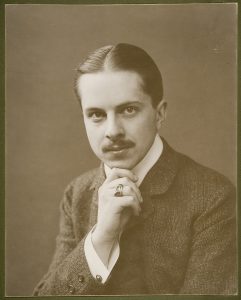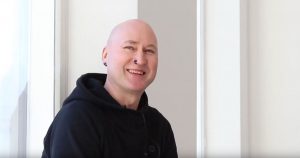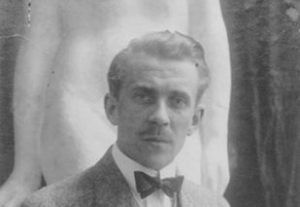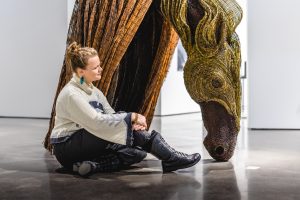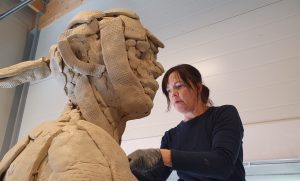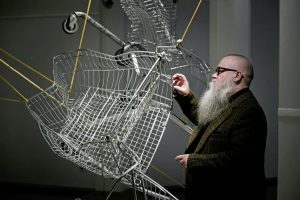Blind Herd
Sokea Lauma (Blind Herd) by Timo Heino was first displayed outdoors in the summer of 2019 in Helsinki. The life-sized animal figures balancing on long, slim legs wandered around the city from May to September. For the summer of 2021, the herd has arrived in Kultaranta.
Heino’s ghost-like deer animals challenge the traditions of sculpture in many ways. The figures are not made of the traditional materials of sculpture – bronze, wood, stone or plaster – or even recycled materials, but of paraffin, polyurethane, acrylic, aluminium and steel. Exploration of the material world is a central theme in Heino’s art. Besides the metaphorical and artistic dimensions, Heino says that materiality is important to him because of its social and political dimensions. In an outdoor space, figurative sculptures usually form a fixed entity, and they usually also have a pedestal or some sort of base that confines them to their own space. Heino’s deer are numerous; they form a herd that is tangibly present in the same space as the viewers without separating boundaries. At exhibition sites, the artist can place the deer around freely relative to one another; they do not appear to have a precisely defined pattern or distance from one another that would remain the same from one exhibition site to the next. The sculpture group has also been exhibited in a gallery space in 2019, but from a purely visual perspective, the work is most impressive outdoors, with the white figures and red warning vests against the green vegetation and blue sky. On display at the Kultaranta exhibition is a new, previously unseen version of the work where the sculptures and vines are combined into a living entity that interacts with the surrounding garden architecture.
One of the most obvious mental associations stemming from the work is probably the reference to the state of nature and the environment, climate change and its consequences. Earlier in the 1960s and 1970s these zombie deer might have been viewed in the light of the threats of that time, and the skeletal deer probably would have also been associated with the threat of nuclear war and scenes after an explosion and radiation.
About Artist
Timo Heino (s. 1962 in Tampere) graduated in 1989 from the Academy of Fine Arts of the University of the Arts Helsinki, where he studied painting and sculpture. In 2016 he graduated from the Academy with a Doctor of Fine Arts degree. He worked also as a teacher at the Academy of Fine Arts in 1998–2012 and before that at the Free Art School in 1996–98. He held his first solo exhibition in 1984. Heino has made several public works including Nonstop, unveiled at the Rastila Subway Station in 1998 in Helsinki, Veteen piirretty viiva (Line Drawn on Water), unveiled c in 2014 in Helsinki and Cosmos unveiled in the Leinelä residential district in 2017 in Vantaa. Timo Heino was awarded the Ducat Prize of the Finnish Art Society in 1990 and the Suomi Award of Young Art of the Ministry of Education and Culture in 1997. He was Ars Fennica candidate in 2003.
Artist's CV
Studies and prizes
Works
Artist photo: Katja Juurakko
